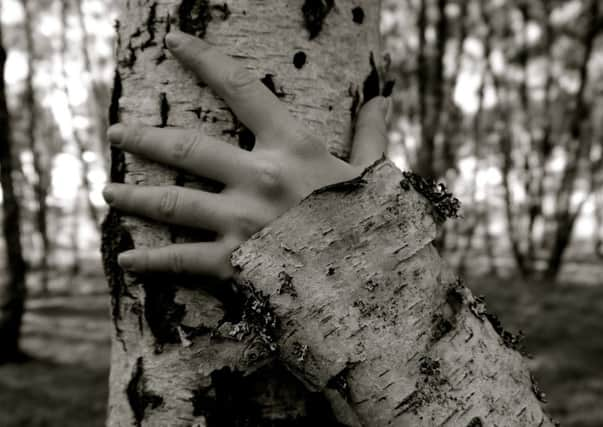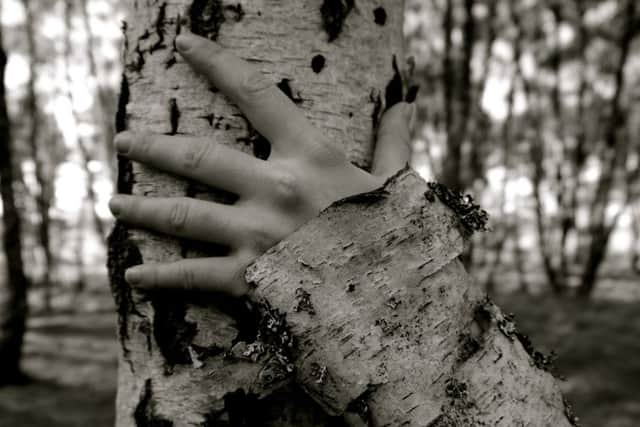Art review: RSA New Contemporaries 2014, Edinburgh


RSA New Contemporaries 2014
Royal Scottish Academy, Edinburgh
* * * *


Several years ago the RSA New Contemporaries replaced the annual student show which was always a bit of a free for all. Now it is a very different undertaking and altogether more professional. The participating students are selected by a panel from the RSA during the annual degree shows in the five Scottish art schools. This year there are 64.
Their numbers are in proportion to the size of the graduating class in each school and the total from which the selection was made this year was almost 400. The students are then asked to make detailed proposals of what they intend to show. These allow the team to plan the exhibition in some detail in advance and the result is remarkable. It is a properly professional display. The work is up to that standard too, indeed some of it is really impressive.
Advertisement
Hide AdImmediately on your right as you enter, for instance, is a ladder reaching into space and standing in concentric circles of flour and soil by Lindsay Hyslop. (The same artist also has a set of photographs of anthropomorphic trees.) William Blake used a ladder reaching into space as a symbol of aspiration. Rooting it in such terrestrial things as Lindsay Hyslop does gives it an added gloss too. It becomes a signature image, a metaphor for all the ambition in the show. Nor is this the only ladder. Dorian Braun and Jack Paton have made one that is equally tall, but it is part of a performance. Like a children’s toy, but on a very large scale, a shaped block of wood works its way down from top to bottom, rung by rung in a series of somersaults, unaided except by gravity. A very large saw on the wall and a very small mechanical model of a saw cutting a log are relics of a more ambitious performance which may or may not have produced the wooden ladder.
Indeed, such indirect witnesses to performances are a feature of this show. For instance, a series of black and white photographs, a gun and other objects in boxes constitute a record of a performance by Johnny Lyons. In imitation of William Tell, the artist, or perhaps it is a stooge, poses with a bottle of Stella on his head for someone, perhaps the artist, to shoot it off. The Health and Safety officer at Duncan of Jordanstone was evidently off duty that day. In Hive by Euan McClure, the bees were originally the performers, but for the exhibition there is only their hive.
A set of rather graphic photographs by Conor Baird suggest his performance is a bit harrowing. Probably as well to have missed it, but nevertheless that does point to what is generally the drawback of performance art in an exhibition like this. All you see is the inanimate relics of an animate event. Morgan Cahn has got round that limitation, however, by turning the relics of what were evidently several performances into just that, relics. Like the bones of some imagined saint, they are presented in elaborate reliquaries. Three baked potatoes sit on gold leaf against jewel crusted silver, for instance, or perhaps most intriguing visually, a little silver horse stands on a rock and supports what is evidently a precious nail.
The evidence of a performance by Justyna Ataman and Aleksandra Roch is distributed through the whole gallery in various videos and still photos. Dressed in gold suits or suggestive bunny outfits, they parody the way that images of women are used in our consumer society. They even seem to have persuaded Ikea to allow them to perform there. Its aisles have supplanted the aisles of the church.
The Brownlee Brothers – and they are brothers – also crop up in several places. They have created a fictitious brotherhood with its own mock-masonic banners and strange ritual objects. Bizarre weapons, two grotesque iron masks and a bronze pig’s head spiked on a lance set in a massive stone, these work well enough as surreal images without the pseudo-masonic gloss.
There are also several works in which you become the performer. The Expert by Dennis Reinmüller is a moon-faced dummy with a computer-generated voice that you are invited to push around. Dan Shay projects rainbow-lit, falling water on adjacent walls so that as you pass, you become part of it, metaphorically immersed.
Advertisement
Hide AdThere is plenty of more stable art though. Fiona Bundy has taken Michelangelo’s design for the Capitoline pavement and painted it on the central wall of the main gallery. Two rather inchoate figure sculptures tucked in at either side seem to continue the Michelangelo theme. On one of the end walls of this gallery a big, abstract painting by Annirose Ansbro composed of collage shapes in black and grey is commanding. On a very different scale, Erin Donnely’s small paintings are beautiful. They also seem very fresh and so, in contrast, they make much else that is here seem a little studied. Culloden Robertson’s pin-ups painted on elaborate pieces of fretwork, however, are simply extraordinary essays in modern kitsch. Charlotte Roseberry’s abstract paintings using patterns and semi-organic shapes in bright, flat colours are very accomplished.
So are Gabriele Jogelaite’s restrained, minimalist graphics in geometric patterns of black and white. An austere composition of broken rectangles, apparently printed on fabric, is particularly impressive. Robyn Boyle has made works that are both reliefs and paintings in sombre colours with semi-architectural forms. Rachel Levine does something similar with a cast of a floor rug. She has apparently then worked on this object with washes of grey and then hung it on the wall. It makes a rather beautiful, three-dimensional painting. Jamie Davidson’s black disk of a recycled table top works equally well. Hanging on the wall it makes a homage to Malevich. Jamie Davidson has, however, also made a composition in which the frames of a chair and of a window interlock. It is very simple, but suggests an intriguing and original homage to Magritte. Grace Johnston’s two small compositions using fragments of stained glass set in hanging frames are beautiful and have the added dimension of exquisite shadows cast on the wall.
Advertisement
Hide AdOne of the most ambitious displays is by Jonathan Douglas. It includes several ingenious works and also has intriguing religious overtones. The flames of the burning bush flicker in a glass box, as it seemed to be for Moses, it is apparently self-sustaining and without a source. (In fact it is a clever arrangement with mirrors and an iPad.) In another glass box, Jesus walks on water. (He is sustained by magnets.) Most impressive, even though it was only half working when I was there, is the shadow of a figure in the mist created with a steam machine and a projector. More religion here too perhaps, as there is a very similar vision in James Hogg’s The Private Memoirs and Confessions of Justified Sinner.
Equally ambitious, though very different, is Sam Baxter’s display. She uses assertively natural materials. Beatrix Potter’s Mrs Tittlemouse would have been proud of a hanging mat made entirely from thistle down, for instance. Her most impressive work, however, is a big composition in mud and grass. On the wall is a square of muddy grass. Apparently it has been hurled at the wall. There is inevitably a lot of secondary splattering. On the floor beneath is symmetrical pile of the same material. It looks though it might be the grass and mud that has not stuck and so has simply fallen in a heap. It sounds random, but the effect is remarkably controlled, formal even. Altogether it proposes a satisfying counterpoint between a casual method and the most basic material and the necessary discipline of art. And if it is a homage to Richard Long, that is no bad thing. After all, this is a student show.